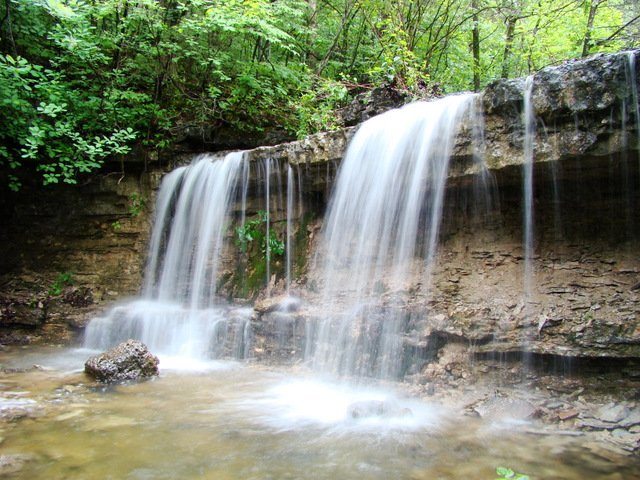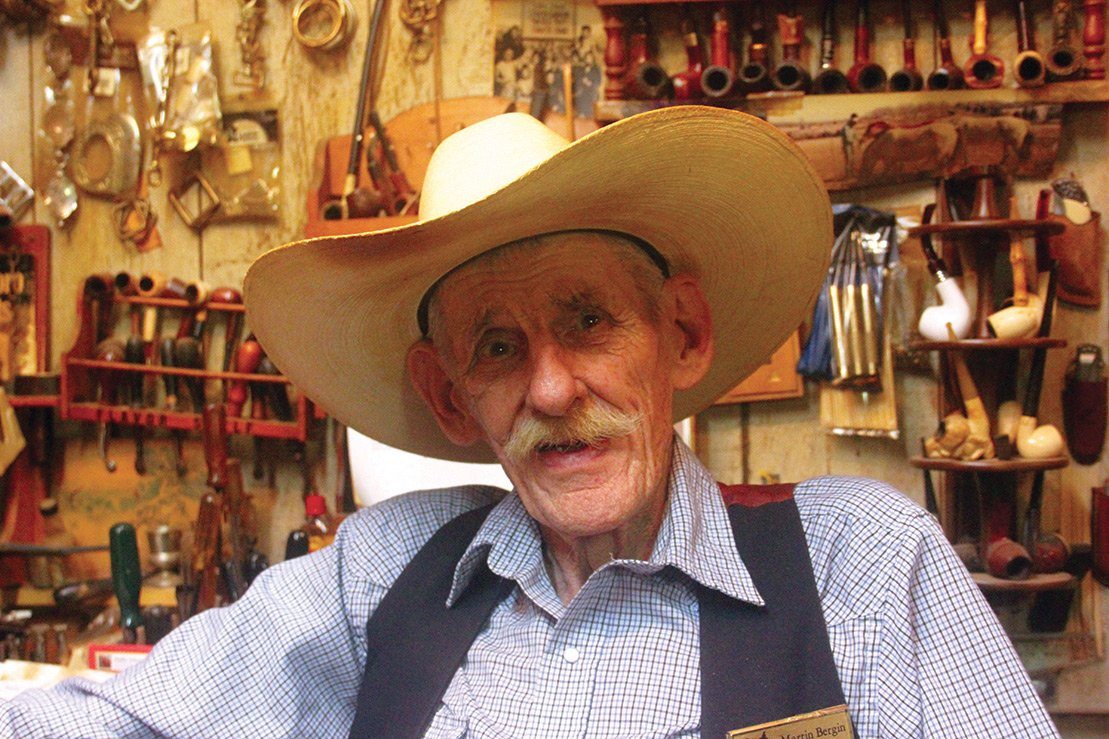Missouri is defined by its small towns as much as anything else. Between our state’s two great metropolises lies our state’s heart—where tiny towns populate great plains and small communities dot the rugged landscape of the Ozark hollows. Some sit high above the Missouri on great river bluffs; some are tucked away in the woods.
From border to border, we looked for the most quaint, charming, and frankly, prettiest small towns. Although there is no official definition of a small town, we decided to look only at villages and towns with populations under one thousand. Yes, places like Jefferson City have been nationally recognized among the beautiful small towns in the country, but places that large are not nearly as tiny as the towns on this list. Jefferson City’s population is more than forty thousand, and a few of the towns here have populations of less than a hundred.
Here, the beauty comes from many things. Some places have quaint downtowns with thriving business districts; others are defined by historic buildings and sublime natural landscapes. Regardless, each of these ten towns is worth the trip and is one of the best ways to get a slice of small town America.
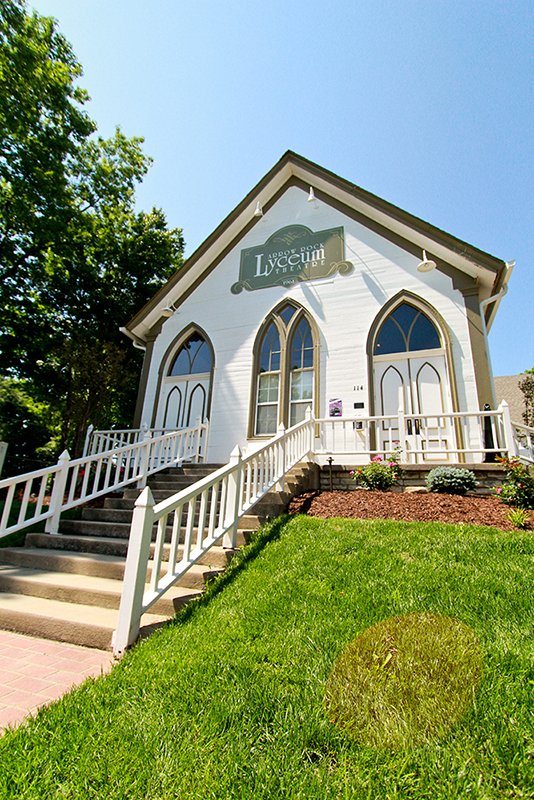
Arrow Rock
No place in the state is quite like Arrow Rock.
Sitting on bluffs above the Missouri River, Arrow Rock has been a place of significance since well before the first Europeans visited. Archaeological evidence shows people have been here for more than ten thousand years. In the early nineteenth century, Arrow Rock became a frontier village along the Sante Fe Trail. After that, prominent Missourians, such as artist George Caleb Bingham and Dr. John Sappington, called Arrow Rock home. Before the Civil War, it reached its peak population of about a thousand.
Arrow Rock’s rich history, however, is only part of the equation that has made it one of the prettiest towns in Missouri. The town’s distinct look does come from the 1829 city plan, but it also would not be the same without the dedicated merchants, Friends of Arrow Rock nonprofit, and Missouri State Parks, who have lovingly preserved the historic buildings, including George Caleb Bingham’s 1837 home.
Today, the town has fewer than fifty full-time residents but has the amenities of a much larger city. Visitors from all over come to Arrow Rock to patronize the Arrow Rock Lyceum Theatre, two museums, a state historic site, seven antique and specialty gift shops, three restaurants, and five bed-and-breakfasts. In the tiny village of Arrow Rock, history not only lives, but it also thrives. Arrow Rock sees the future in its past.
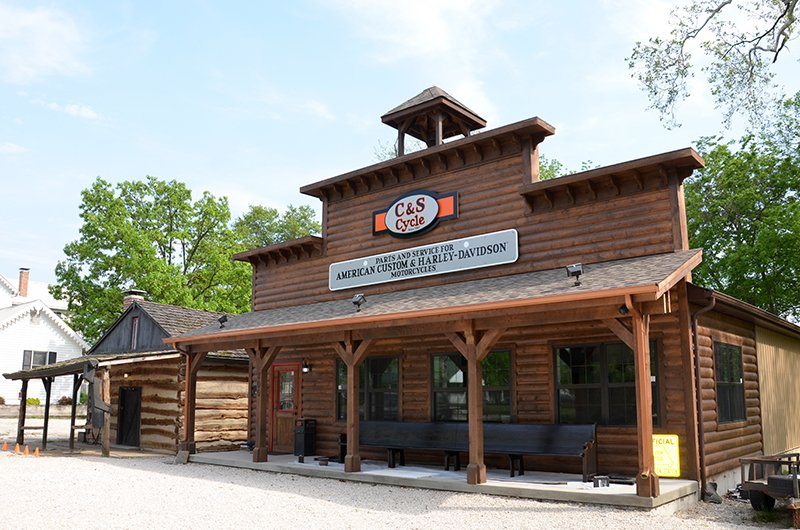
Kimmswick
Kimmswick is an unlikely hotbed for tourism. In 2010, the US Census recorded the population at a mere 157. However, there is plenty to do in this quaint village twenty-five miles south of St. Louis. You could spend a day, or two, here.
The annual Strawberry Festival in June and the Apple Butter Festival in October are the town’s two biggest attractions, drawing thousands of visitors that come to indulge in the fruits of the season. The Strawberry Festival overlaps with the town’s bluegrass festival, so visitors can enjoy music and fresh berries at the same time. Although those two weekends are the highlights, the town hosts events throughout the year, including Halloween festivities in the fall and Christmas celebrations during the winter.
Kimmswick is worth the trip any time of the year, though. Founded more than 150 years ago, the historic downtown is now home to many homegrown boutiques, art galleries, gift shops, and antique stores.
The town is also a destination for those with a sweet tooth. The town’s two bakeries—the Dough Depot and the Blue Owl —are both required visits. Our recommendation is getting lunch at the Dough Depot and dessert at the Blue Owl, or vice-versa. Or better yet, get a full meal and dessert at one bakery on Saturday, and try the next on Sunday.
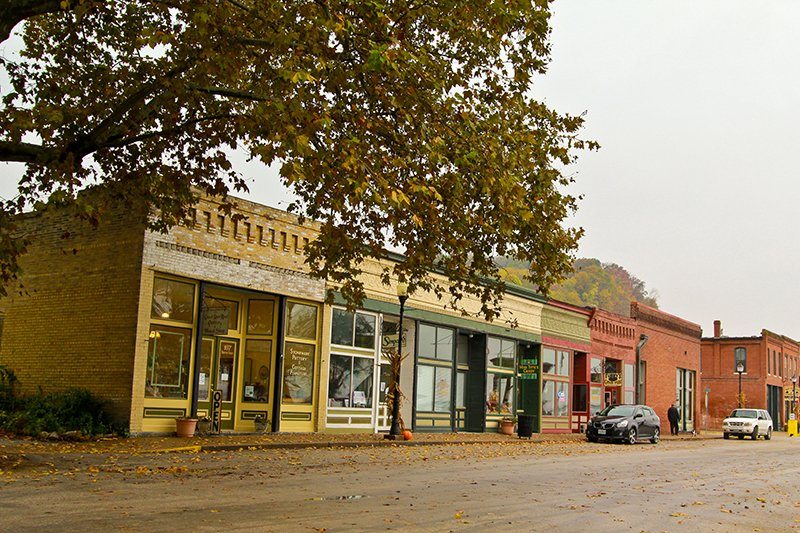
Clarksville
Seventy-five miles northwest of St. Louis, Clarksville has become a day-trip destination for residents of the Gateway City. The town is no more than eight blocks long, but its business district is thriving with antique shops, artisan shops, speciality stores, and restaurants.
Founded on the banks of the Mississippi River in 1819, Clarksville was named after Corps of Discovery explorer and governor of the Missouri territory William Clark. In 1880, the population hit its peak at 1,600. With a current population of about a third of that, it’s not the population center it once was, but that adds to the small town charm.
Clarksville’s quaint storefronts, restaurants, and bed-and-breakfasts aren’t the only things that attract visitors. In the winter, Clarksville is one of the best places in the state to see bald eagles. River Front Park is only one of the places to spot the majestic birds. Just outside of town, Overlook Farm restaurant and resort is the place to take in the beautiful northern Missouri countryside.
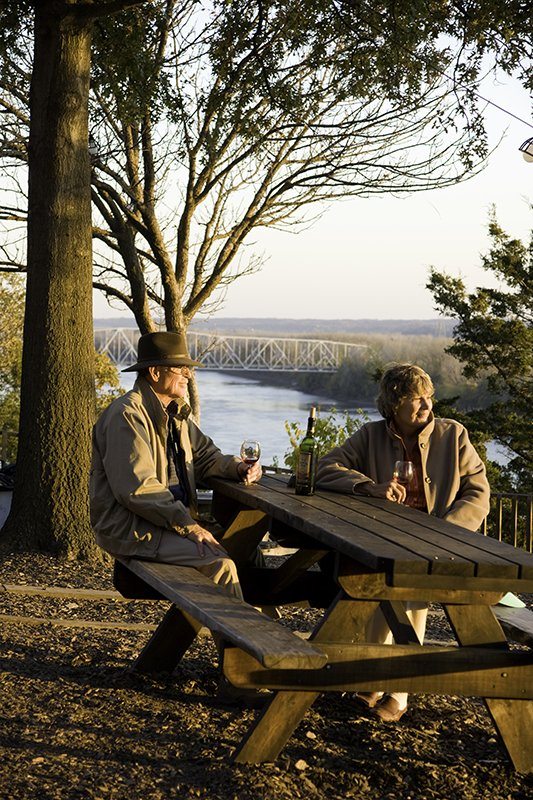
Rocheport
Not quite twenty miles from Columbia, Rocheport, population 239, is the town that proves that Mid-Missouri is just as beautiful as any other part of the state.
Taking its name from the French words for rocky and port, Rocheport sits on the jagged bluffs of the Missouri. The town was established as a trading post in the early nineteenth century and became a full-fledged town in 1825. Today, the town still offers the same vistas that Lewis and Clark saw when they traveled through the area more than two hundred years ago, though I-70 pierces through the landscape to the southeast.
The best place to catch a glimpse of Mother Earth’s majesty might be Les Bourgeois Vineyards. Not far from the KATY Trail, the winery has indoor and outdoor spaces that look out onto the Big Muddy.
On the other hand, Les Bourgeois is not the only attraction in town. The small downtown area has shops, galleries, and even a museum. No trip to this river town would be complete without stopping by the Rocheport General Store. The store has a variety of dry goods and offers breakfast, lunch, and dinner. Additionally, it often becomes the town’s music venue, playing host to an eclectic variety of music acts, from bluegrass to classic rock, on weekends.
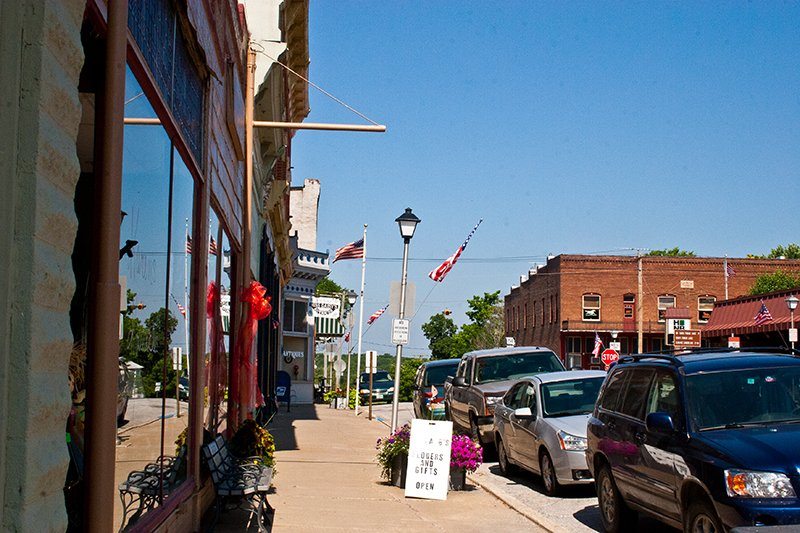
Perry
This year, Perry, in rural Ralls County, is celebrating its sesquicentennial—or 150th birthday.
In July 1866, a year after the Civil War had ended, the town of Perry was platted and named after Perry Crosthwaite, who owned a nearby mill. In the early days of Perry, the Crosthwaite family owned the hotel, dry goods store, market, drug stores, hardware store, lumberyard, mills, livery stables, wagon and blacksmith shop, and opera house. Since then, the town has grown, but not too much. The population currently hovers around 700—compared to the 147 recorded in the 1880 Census.
Today, Perry touts itself as the southern gateway to Mark Twain Lake, and its residents preach that it’s small town living at its best.
The charming, historic downtown evokes Main Street USA, and the nearby waters at Mark Twain Lake are perfect for Andy Griffith’s favorite pastime—fishing.
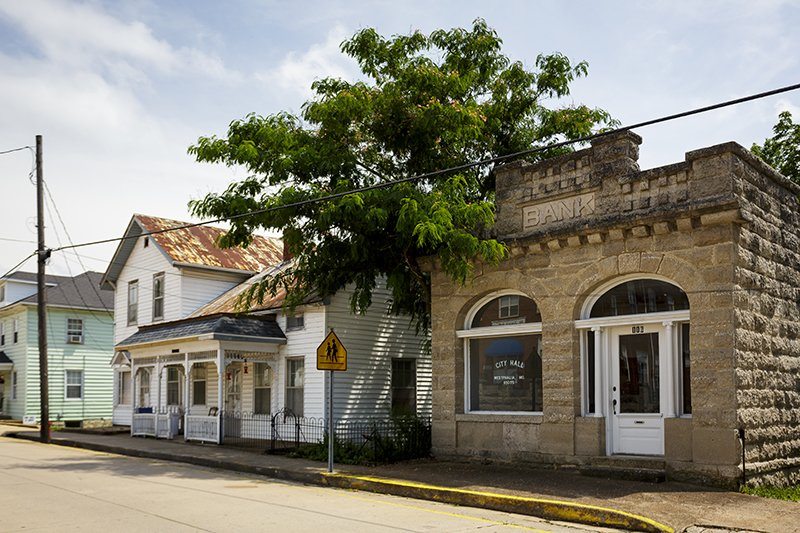
Westphalia
Less than twenty miles south of Jefferson City, the topography starts to develop into the rolling hills and jagged plateaus distinct to the Ozarks. Tucked away into the side of these hills is the tiny community of Westphalia.
With a population of less than four hundred, Westphalia is marked by a short drag of quaint, historic buildings along main street. Despite such a small population, the town has a museum dedicated to preserving and celebrating the area’s rich German heritage, a restaurant in an old inn, and Westphalia Vineyards.
Built in 1848, the St. Joseph Catholic Church is one of the oldest buildings in the area. Today, it still shines like a white, stone beacon and attracts passersby to this tiny community.
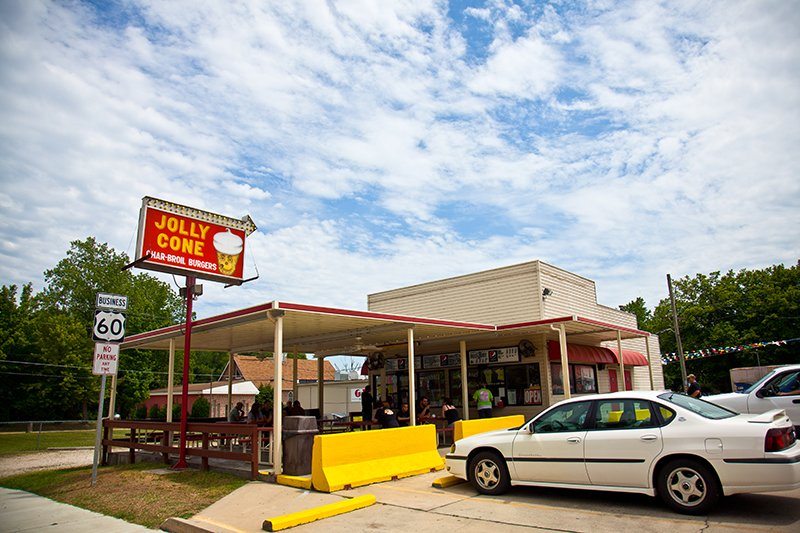
Van Buren
Van Buren sits on the banks of one of the most gorgeous bodies of water in the country—the Current River.
The tiny town spills right into the crystal blue waters of the Current and is, for many, the gateway to Ozark National Scenic Riverways. Founded in 1833 and named after statesman Martin Van Buren, this small community has been the county seat for Carter County for not-quite two hundred years. The town did not receive electricity until 1927, and it still serves as a destination for those who want to unplug.
Today, the town is home to a little more than eight hundred residents and sports an adorable, historic business district, along with many places to camp, hike, float, hunt, and do about anything else outdoorsy. Home to many swimming holes, summer is the best time of the year to visit Van Buren.
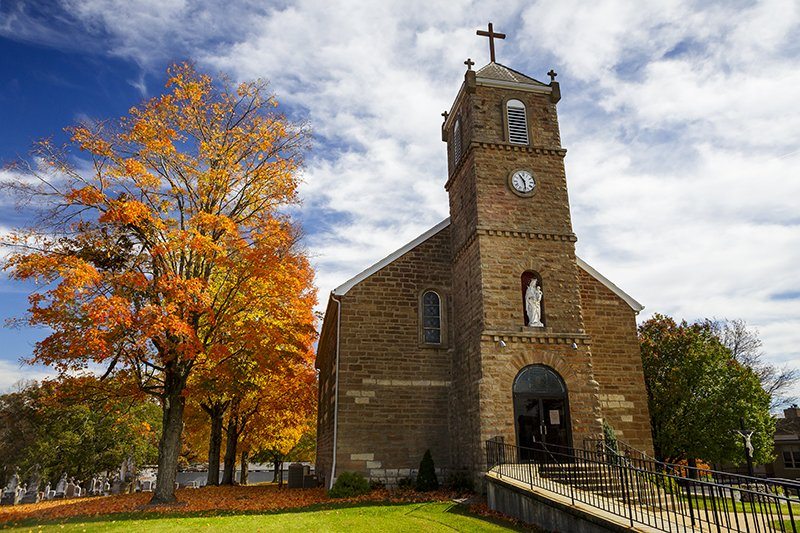
Weingarten
Weingarten’s name sums up what the town is all about. The German settlement in Ste. Genevieve County takes its name from the German word for vineyard, and the rich landscape surrounding the tiny village is Missouri wine country at its best.
Thirteen miles from Ste. Genevieve, Weingarten was founded in 1837 by Jacob Wolf. Today, the oldest building in town is Our Lady, Help of Christians. Built in 1872, it still serves a large parish.
Although Weingarten is technically unincorporated and was absorbed into the total Ste. Genevieve County for the 2010 Census, the population hangs around one hundred. The biggest attraction in town is Weingarten Vineyard, which might sound silly when translated to German but is seriously worth visiting. Dinner at the Garten Haus restaurant is the perfect way to end a day visiting southeast Missouri.
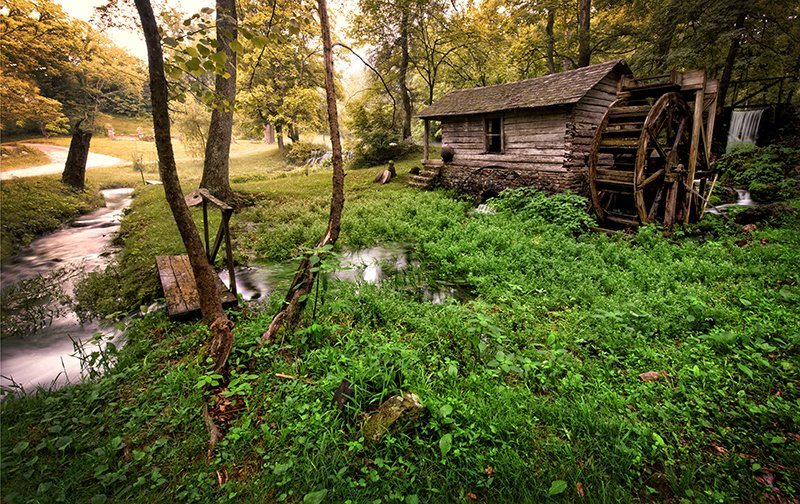
Centerville
As a part of the Arcadia Valley region, Centerville sits on the west fork of the Black River and is a historic mining town.
The Black River and surrounding St. Francis Mountains mark this region with natural beauty, and Centerville adds to the charm by sporting several historic buildings that deliver the nostalgic feel of yesteryear. Reeds Spring Mill and the old Reynolds County courthouse are just a few.
With a population of about two hundred, Centerville is among the smallest towns in the state, but it also stands out as one of the prettiest.
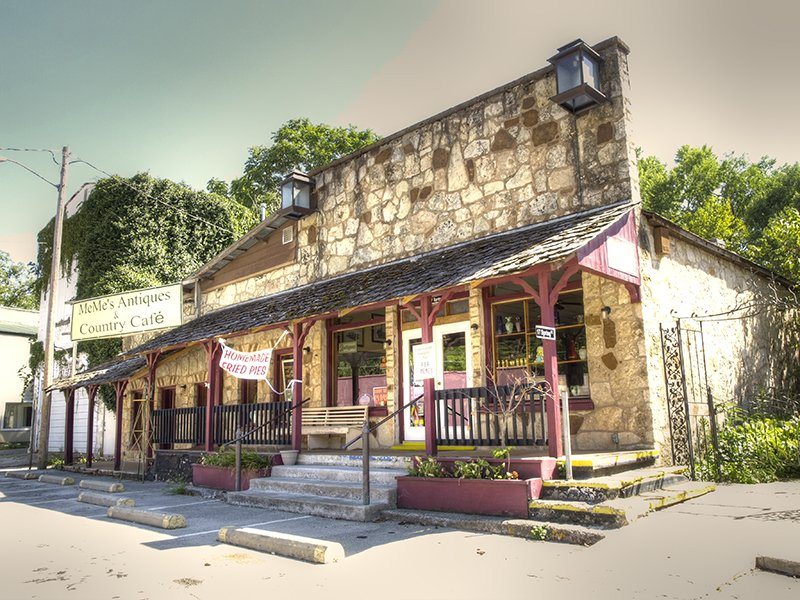
Reeds Spring
A cozy village on Table Rock Lake, Reeds Spring is more than a vacation destination.
Although Table Rock Lake sports a number of resorts and summer homes, Reeds Spring is year-round hometown for about nine hundred proud residents. For more than a hundred years, this small town has stood the test of time, surviving fires, Bonnie and Clyde, and more.
The charming business district and 1936 stone Works Progress Administration building add to the town’s charm, but what really makes it beautiful is the abundance of natural beauty in the bordering lake and surrounding Ozarks. Currently, the city is looking forward by remodeling the WPA building, making it ADA accessible, adding a library, and turning it into a new community center.
Photos by Notley Hawkins and Courtesy Missouri Division of Tourism
Related Posts
7 Missouri Waterfalls
A haven for gorgeous scenery, the Ozarks is brimming with stunning waterfalls. April and May are great months to enjoy our waterfalls, as water flow is at its peak from spring showers.
Our 3 Favorite Horse Trails in Missouri
The Ozarks and Missouri River wilderness regions are particularly captivating. One of the best ways to experience hidden bluffs, elusive creeks, and historic cabins is by horseback.
Meet The Saddlemaking Cowboy Poet of Missouri
A widower since 2011, Martin still surrounds himself with the stock in the trade of saddle making. His workspace is as much a museum of leather crafting as it is a saddle shop.

